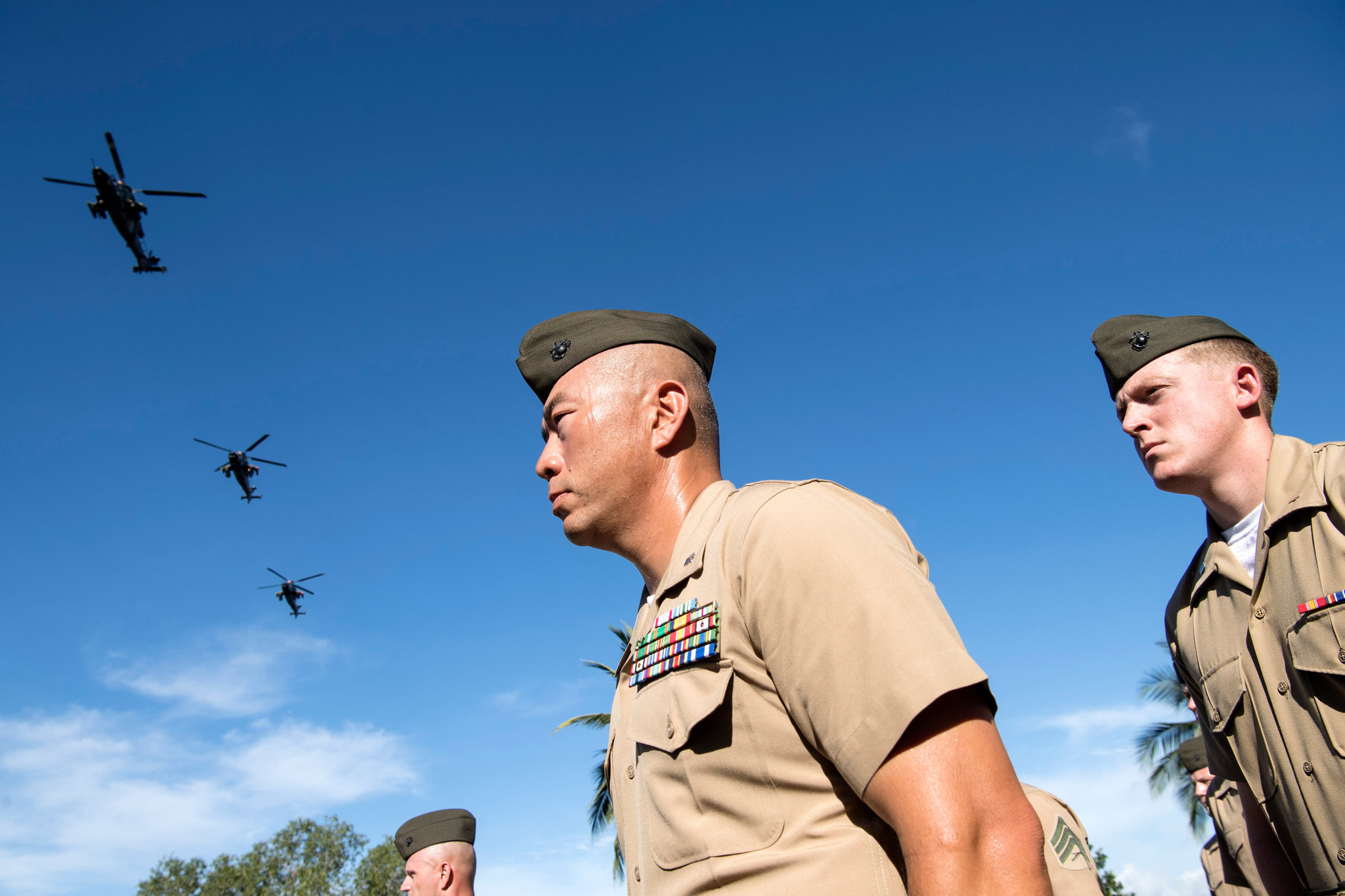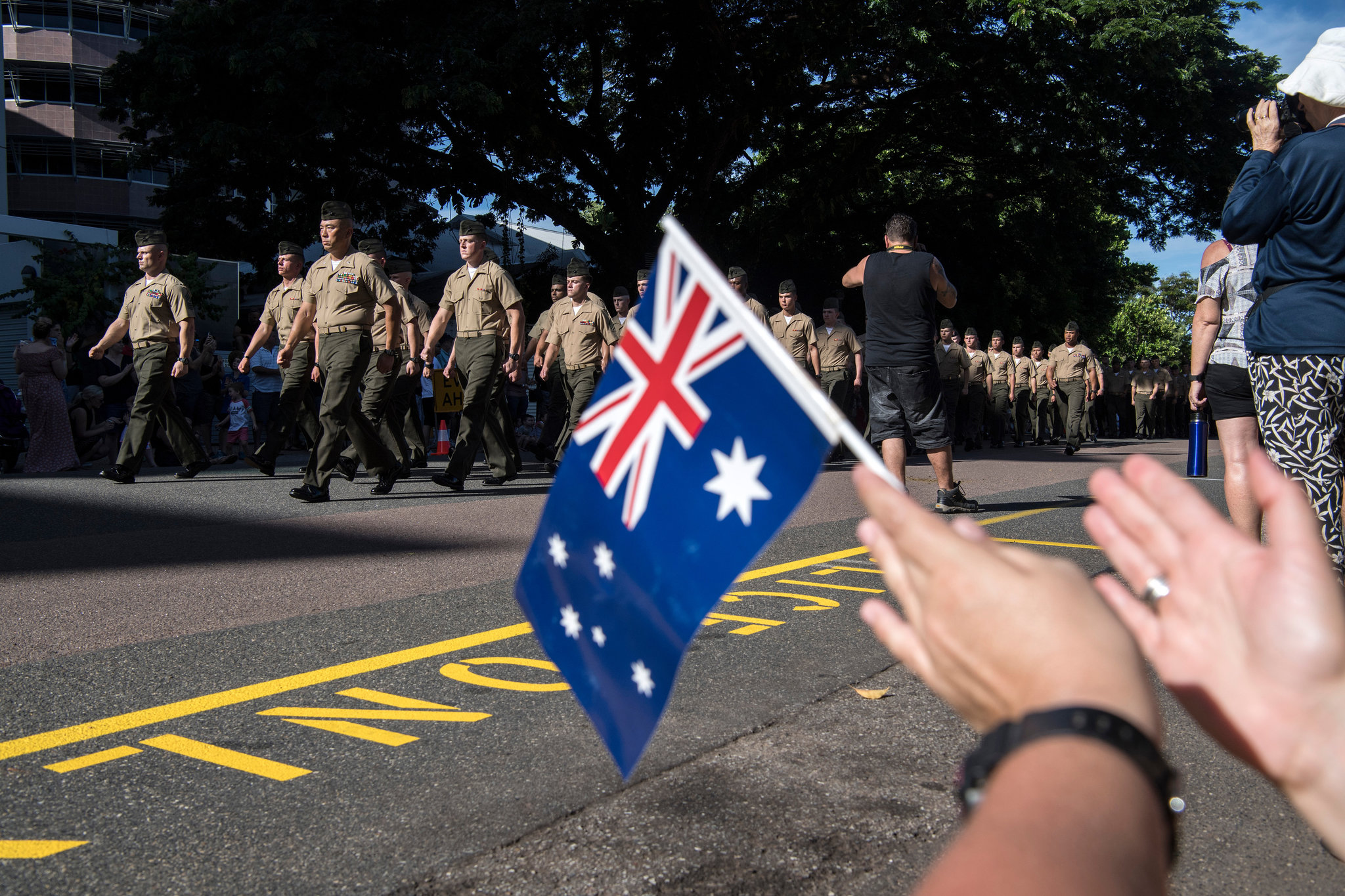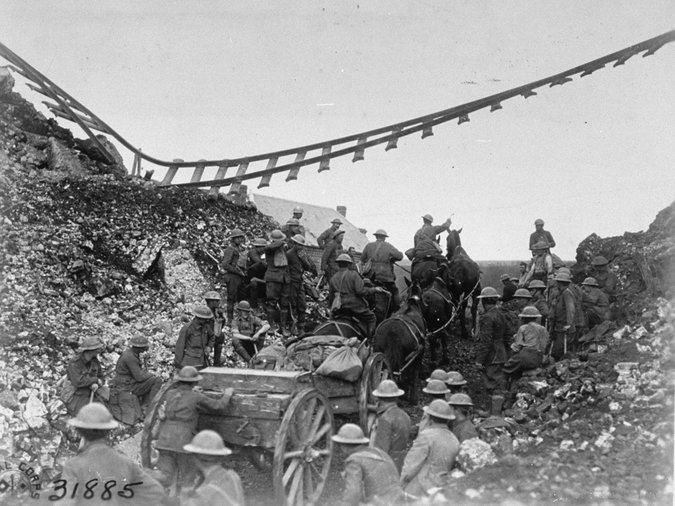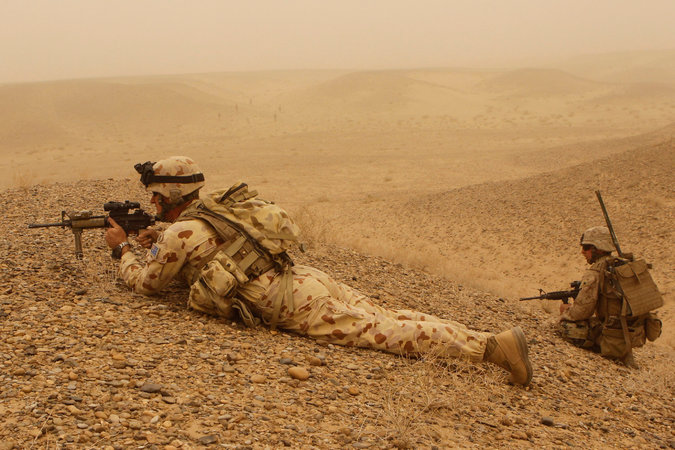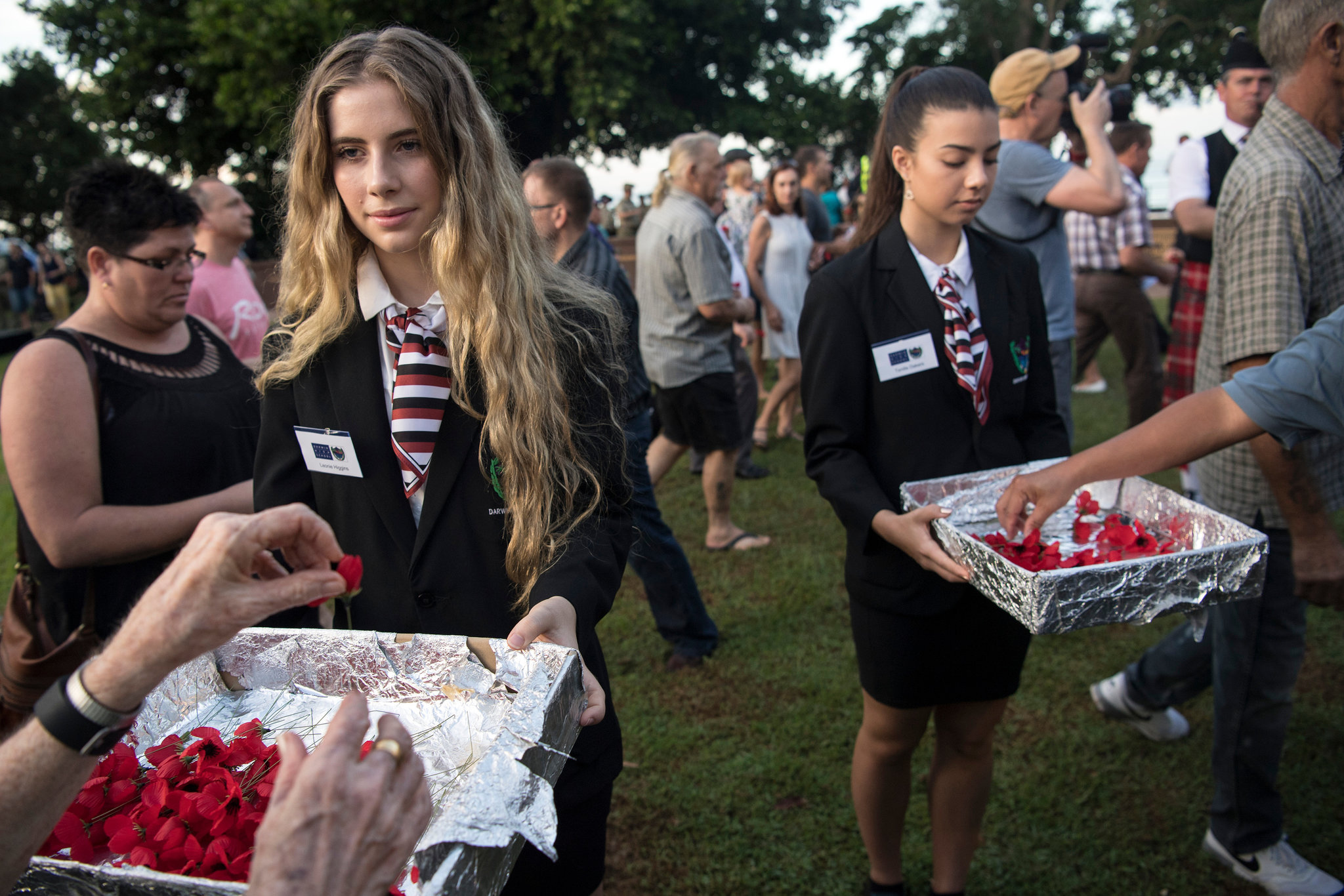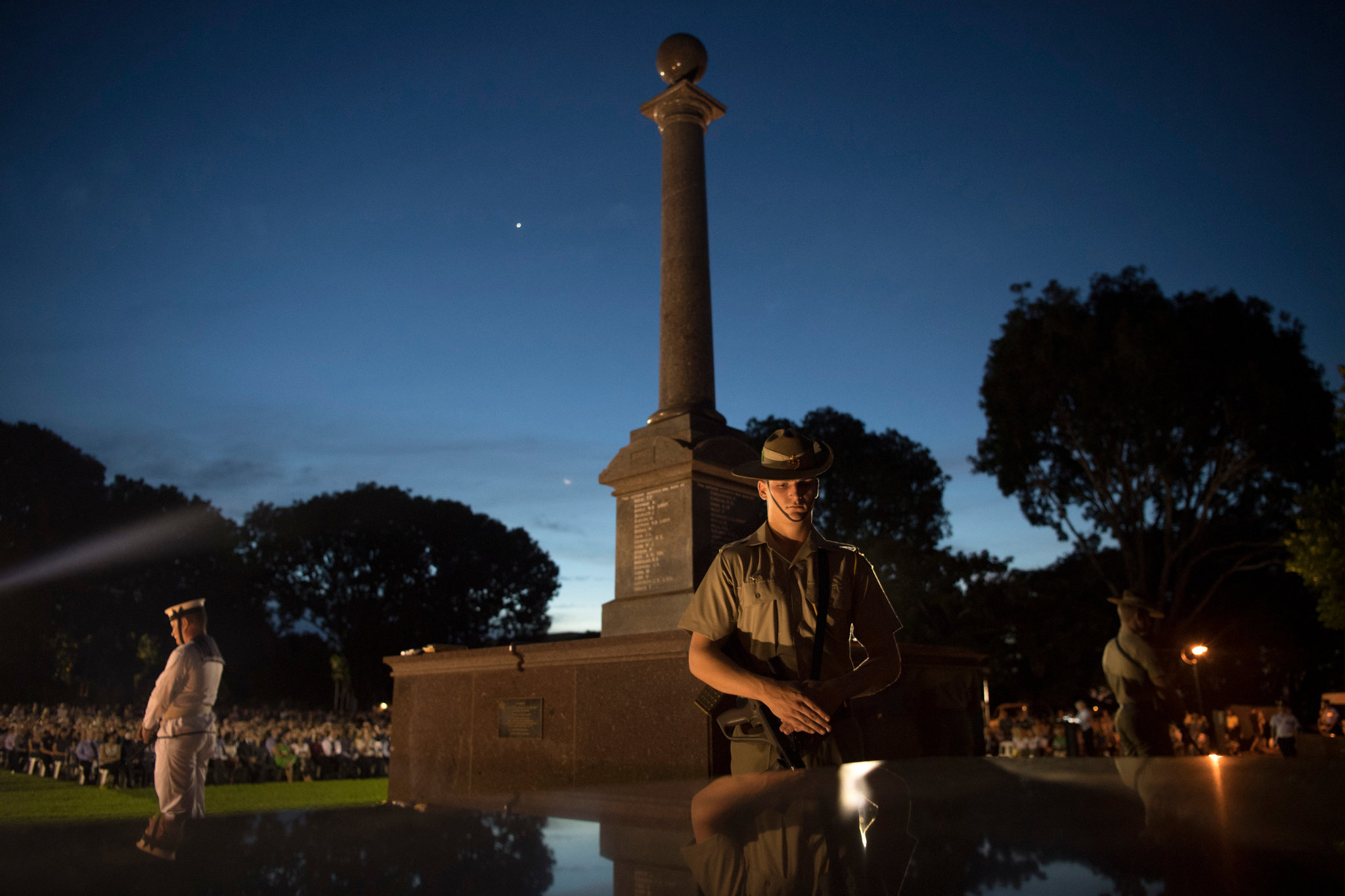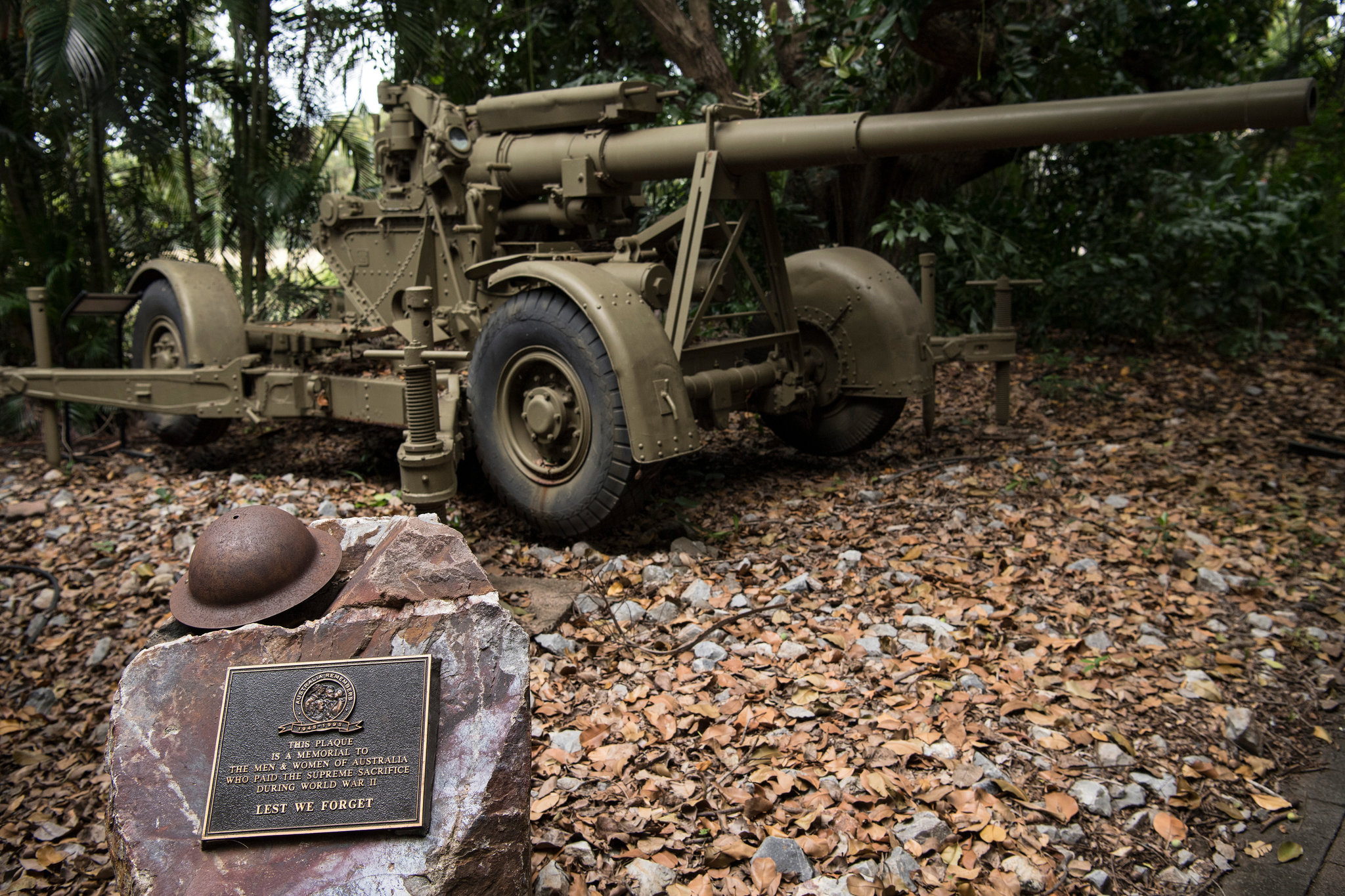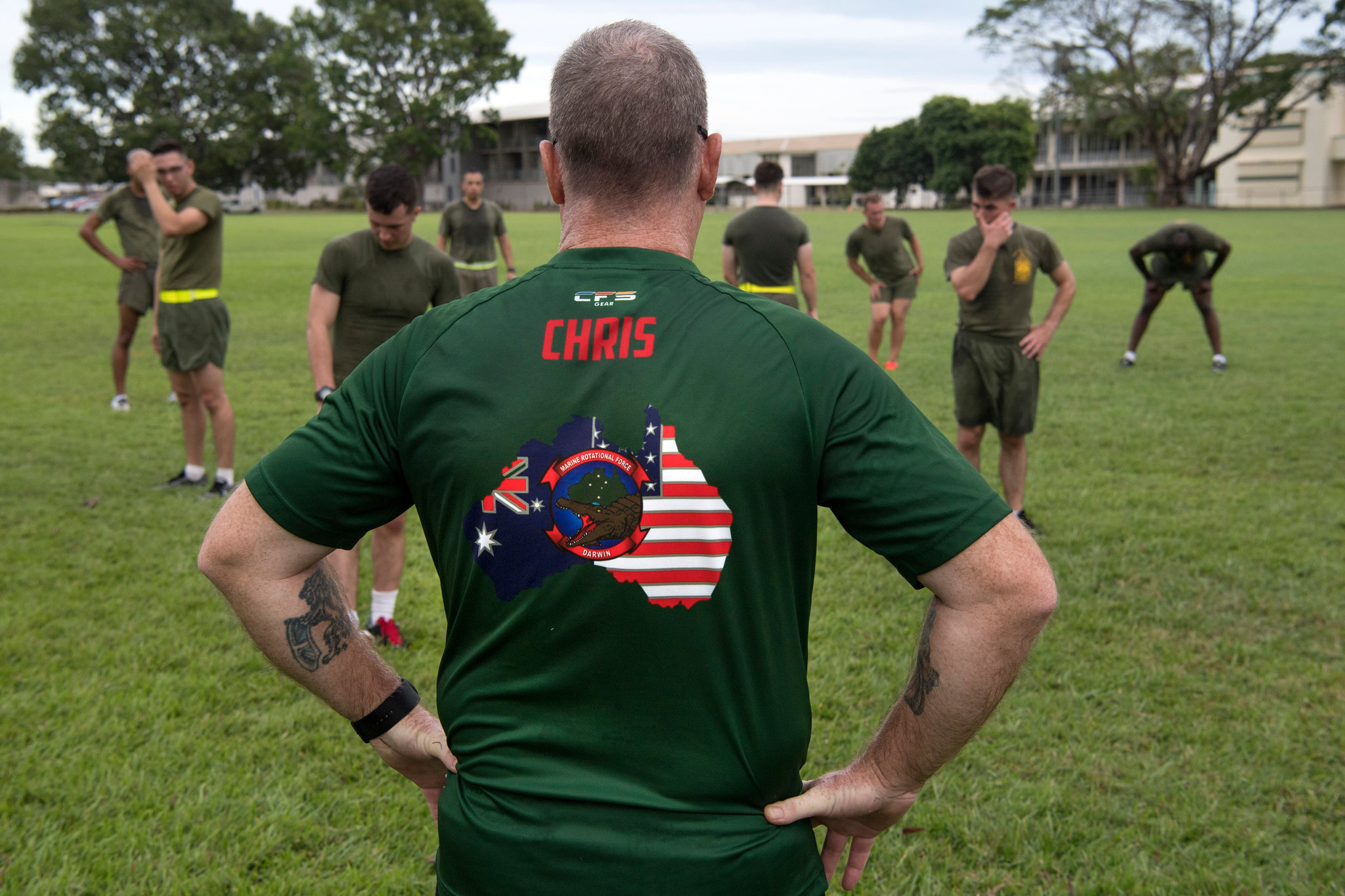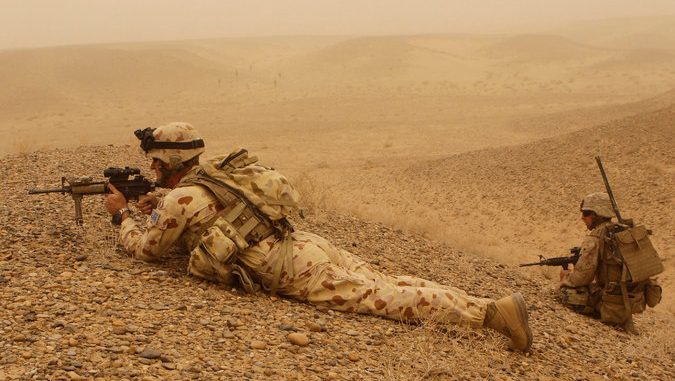
Australia fears being left isolated, hence deep ties w US. But Trump actions have many wanting closer links w China, its main trading partner.“The question is: What might Trump’s America drag Australia into?’ It’s a very scary thought for Australians, many of whom see Trump as highly erratic and self-interested.” Former Prime Minister urges a more independent foreign policy in which Australia accepts China as the region’s dominant power. “Australia should say no to US more often — as France and Canada do — especially on issues affecting relationship with China.” Australian and US troops have fought side by side in every major conflict since World War I & there are few militaries with closer relations Top, Australian soldier and US Marine patrolling in Helmand Province in Afghanistan in 2010.Below, Lt. Col. Brian S. Middleton, center, commanding officer of US Third Battalion, Fourth Marines,during Anzac Day in Darwin, Australia, last week. The American unit just moved into Darwin for six months of training.
Australian and American troops have fought side by side in every major conflict since World War I,
and there are few militaries in the world with closer relations:
- 1,250 US Marines recently arrived in Darwin for six months of joint exercises;
- the two countries share intelligence from land, sea and even outer space;
- and Prime Minister Malcolm Turnbull recently met President Trump on an aircraft carrier in New York.
But now Australia’s most important military alliance faces a new challenge:
the risk President Trump will draw the nation into a conflict or other unexpected crisis that
- destabilizes the region,
- angers its trading partners
- or forces it to side with either the United States or China.
United States Marines marched on Anzac Day in Darwin. The holiday commemorates Australians and New Zealanders who died fighting together in battle.
“The question is: What might Trump’s America drag Australia into?”
said Ashley Townshend, a research fellow at the United States Studies Center at the University of Sydney.
“That’s a very scary thought for Australians, many of whom perceive Donald Trump to be an erratic and highly self-interested commander in chief.”
Trump has already embarrassed Australia once, with an abrupt phone call to Turnbull in February
that seemed to dismiss Australia’s historic role as a friend who often gives more than it gets.
Now his unpredictable approach is fueling a national debate about Australia’s relationship with the world, and especially the US.
Last week, Paul Keating, a prime minister during the Clinton years, reignited discussion by arguing that Australia must end its status as a “client state.”
Australia is essentially caught between two powers:
China, its largest trading partner,
and the United States, its faithful ally,
with a military connection that has been strengthened by the wars in Iraq and Afghanistan
and more recent agreements to gradually expand the American footprint in Darwin.
Australia and the US are now trying to work out how to manage that military momentum in an increasingly tense part of the world.
If the military is a hammer in the Trump era, at what point does every dispute start to look like a nail?
Australian troops passing through a gap built by Americans under a destroyed railway near Mazinghien, France, in 1918. Australian and American troops have fought side by side in every major conflict since World War I.
“It’s always important that there’s a balance between the military and the diplomatic — because of the scale of the military,” Keating said in an interview.
“In both economic terms and in strategic terms, they squeeze diplomacy out.”
Darwin As Symbol of US / Australia Alliance
Darwin, a humid, crocodile-infested coastal city at the northern end of this vast country,
captures the past, present and future of Australia’s alliance with the United States.
Japan attacked the city on Feb. 19, 1942, killing 235 people,
and residents are quick to point out that the raids were led by the same commander responsible for the attack on Pearl Harbor 10 weeks earlier.
Within a few months, Darwin became a hub for counterstrikes from bombers flown by Americans.
A pocket guide for arriving American troops set the tone: “You’re going to meet a people who like Americans and whom you will like.”
During the Cold War, the relationship expanded.
Kim Beazley, a former defense minister and ambassador to the United States, cited the rise during the 1960s of three joint installations
to maintain contact with American submarines in the Indian Ocean and provide infrared detection of Soviet capabilities,
increasing the warning time for a potential Soviet strike to 30 minutes from 15.
Those installations and the ones that followed —
especially Pine Gap, a joint Australian-American spy base that helps provide battlefield intelligence and early warnings for missile launches around the world —
“are never talked about, but they’re really the guts of the alliance,” Beazley said.
On the ground in countries like Iraq and Afghanistan, Australian troops are also peers in battle,
said Lt. Col. Brian S. Middleton, commanding officer of the Third Battalion, Fourth Marines —
the American unit that just moved into Darwin for six months of training with the Australians.
An Australian soldier and an American Marine patrolling in Helmand Province in Afghanistan in 2010.
As part of the American pivot to Asia, the long-term plan, negotiated under the Obama administration, is to send up to 2,500 Marines to Darwin —
the largest deployment of United States forces to Australia since World War II.
“It’ll make us more effective in whatever conflict we end up serving in together,”
said Kelly Magsamen, the Pentagon’s top Asia-Pacific policy official at the end of the Obama administration.
Australians & US Close In “Secondment” / Space / Missile Defense / Cyberwarfare
Other American officials said that in space, missile defense and cyberwarfare, the Australians are all in.
Australia is working with the United States to relocate a special radar that helps better track satellites.
The Australian military is also making a big push in innovation in undersea warfare and drones in the air and underwater.
And in many cases, that means purchases of American equipment.
An Australian defense planning report last year laid out a $20 billion increase in the annual military budget by 2025, including money for
- fighter jets,
- surveillance technology,
- submarines,
- surface ships
- and other equipment.
Australians are embedded at every level of the American military.
Australian Air Commodore Phillip Champion’s story is common:
He first worked with the Americans as a young pilot in the early ’80s, flying surveillance aircraft,
and later as a commander all over the world, including Afghanistan.
Handing out poppies on Anzac Day to place on memorials.
“We’ve grown up together,” he said in an interview by phone from Hawaii,
where he has been posted to the United States Pacific Command since January.
“We trust each other and know we can operate together.”
Still, there have been challenges.
In a discussion last year about the cost of the Marines in Darwin, the Australians came in with a data-heavy presentation asserting that
- United States Marines eat more than typical Australian soldiers,
- and therefore strain sewage systems more,
- and argued that the Americans should pay more of the costs of improving wastewater lines on military bases.
The proposal stunned even the lead Australian negotiators, who quickly dropped it, according to American defense officials.
US Pushing Australia Into Unwanted Strategic Confrontations w China
The toughest issues have involved China, the crucial lever of influence with North Korea and the region.
Some US officials have urged Australia to engage in robust freedom-of-navigation operations in the South China Sea,
where China has set up bases on disputed islands — but the Australians have resisted.
Last year, US officials also expressed alarm about a port in Darwin that local officials leased to a Chinese company for $361 million,
possibly making it easier to collect intelligence on American and Australian forces stationed nearby.
“China is the elephant in the room for both of us,” Ms. Magsamen said.
“We need to have a more frank and structured discussion amongst ourselves about how to manage that relationship.”
Allan Gyngell, who ran Australia’s intelligence agency from 2009 to 2013, argues in a new book, “Fear of Abandonment,” that
Australia’s foreign policy is still driven by worries about being left isolated,
without the promise of security from a powerful friend: first the UK, now the US.
Former Prime Minister Keating is among those urging a more independent foreign policy
in which Australia accepts China as the region’s dominant power.
In the discussion last week at the Lowy Institute, a think tank in Sydney, Keating said
Australia should say no to the United States more often — as France and Canada do —
especially on issues that affect Australia’s relationship with China.
A service at dawn at the Darwin Cenotaph, a war memorial.
Those who reject this argument include John Howard, the prime minister who followed Keating and was in Washington on Sept. 11, 2001.
In an interview at his modest office, with worn carpets and military memorabilia,
Howard warned against being “mesmerized by China” and said his Liberal Party,
which is the more conservative of the country’s two largest parties, had “pulled off the daily double.”
“We deepened our relationship with the U.S. — and China became our biggest customer,” he said.
He added that too many Australians were jumping to conclusions about President Trump. “He’s different,” Howard said.
“Whether he’s good different or bad different is not the point; the world has to get used to him.”
In Darwin too, there are divisions.
Luke Bowen, who heads an economic development agency for the Northern Territory, which includes Darwin,
said he would like to see even more American troops and equipment move in to the area, possibly from the Philippines.
“It’s a priority for us to make the fit as comfortable as possible.
It’s not just about the Australian presence. It’s about the combined presence.”
The Darwin Military Museum. Japan attacked the city on Feb. 19, 1942, killing 235 people.
But Justin Tutty, who works with a watchdog group that monitors the impact of the American Marines, said
he was worried about “a one-sided relationship” in which the Americans lay out the priorities.
“The overinvestment in ‘interoperability’ ties us closer to our larger foreign partner’s attack formation,
and reduces our capacity to act, relate and think independently,” he said.
Last week for Anzac Day, commemorating Australians and New Zealanders who died in battle,
American Marines and Australian soldiers marched through Darwin’s streets together.
Later, there were friendly games of rugby, and infantrymen shared war stories.
“The Australians have been fighting in the same places we’ve fought for over 100 years,” said Colonel Middleton of the Marines.
“When we operate with the Australians, we learn as much from them as they learn from us.”
Australian Warrant Officer Class 2 Chris Houghton with American Marines in Darwin.
Source: Trump’s Volatility in Asia Distresses a Longtime U.S. Ally: Australia – The New York Times
